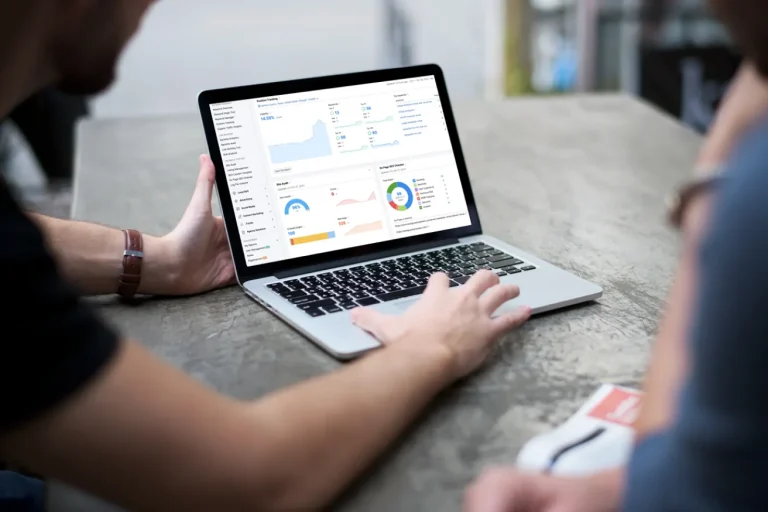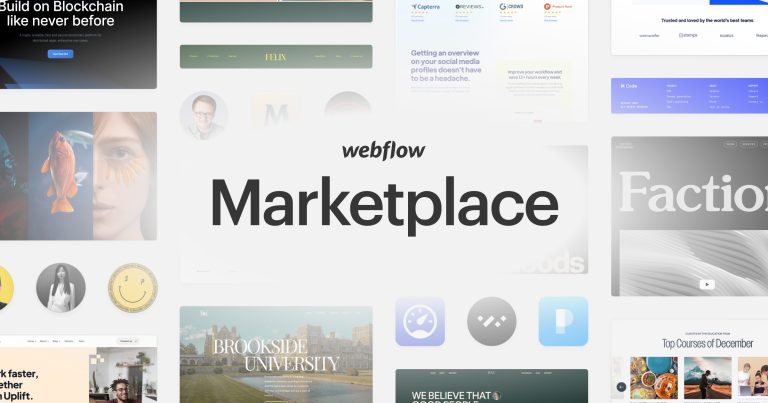New Customers, New Growth: A Guide to Acquisition Marketing
Imagine a bustling marketplace filled with potential customers, many unaware your business even exists. Acquisition marketing is your map to navigate this exciting landscape. It’s the strategic art of transforming strangers into loyal patrons. By understanding your target audience’s needs and crafting compelling messages, you can attract their attention, guide them through the buying journey, and ultimately convert them into paying customers. This comprehensive guide delves into the core principles of acquisition marketing. We’ll explore the construction of a winning acquisition strategy, delve into various online and offline channels to reach your ideal customers, and equip you with tools to measure success. Whether you’re a seasoned marketer or a budding entrepreneur, this guide will empower you to unlock the potential of acquisition marketing and fuel your business’s growth.
What is Acquisition Marketing?

Imagine running a thriving bakery, but only a handful of customers know you exist. Acquisition marketing is like the enticing aroma wafting from your ovens, drawing in new passersby. It’s the strategic set of tools and techniques businesses employ to transform complete strangers into loyal patrons. Unlike brand awareness campaigns that aim for broad recognition, acquisition marketing targets a specific audience: those who are already exhibiting a need or interest that your product or service can address.
Here’s the key difference: brand awareness might make someone aware of delicious cookies, but acquisition marketing convinces them that your bakery has the best cookies in town, and guides them through the buying process, ultimately converting them into a satisfied customer with a full cookie bag.
Through targeted messaging and strategic campaigns, acquisition marketing acts as a bridge, connecting potential customers who have a problem to your business as the ideal solution. It’s the engine that fuels customer growth, ensuring your business isn’t just baking delicious cookies, but selling them to a steady stream of happy customers.
Benefits of Acquisition Marketing
Acquisition marketing isn’t just about a one-time transaction; it’s about cultivating a thriving customer base that fuels your business’s success for the long haul. Here are some key benefits to consider:
1. Business Growth:
The most obvious benefit is a direct increase in your customer base. Acquisition marketing acts as the lifeblood of any business, bringing in new customers who translate to increased revenue and market share. As your customer base expands, so does your brand recognition and influence within your target market.
2. Building Brand Loyalty and Advocacy:
Effective acquisition marketing campaigns don’t just convert potential customers; they create satisfied customers. When you attract individuals with a genuine need or interest that your product or service addresses, they’re more likely to have a positive experience. This fosters brand loyalty, encouraging repeat purchases and positive word-of-mouth recommendations. These “brand advocates” become organic marketing machines, attracting new customers through their positive experiences.
3. Gaining a Competitive Edge:
A well-executed acquisition strategy helps you not just survive but thrive in a competitive marketplace. By effectively reaching your target audience and highlighting your unique value proposition, you can gain a foothold and carve out a niche for your business. This proactive approach ensures you’re not just reacting to competitor actions, but actively shaping market perception and attracting a loyal customer base.
4. Data-Driven Insights and Continuous Improvement:
Acquisition marketing campaigns are a goldmine of valuable data. By tracking key metrics like customer acquisition cost (CAC) and conversion rates, you gain valuable insights into your target audience’s behavior and preferences. This data empowers you to refine your marketing efforts, tailor messaging for even greater impact, and continuously improve your acquisition strategy. The learnings from successful and unsuccessful campaigns allow you to optimize your approach, ensuring you attract the right customers at the right cost.
5. Building Customer Lifetime Value:
Customers acquired through targeted campaigns often have a higher lifetime value (LTV) compared to those reached through broad brand awareness efforts. Since they’ve been nurtured through the buying journey with messaging that resonates with their specific needs, they’re more likely to become loyal customers who make repeat purchases and engage with your brand for a longer period. This focus on acquiring high-value customers fosters a sustainable business model built on long-term relationships.
Investing in acquisition marketing is an investment in the future of your business. By attracting the right customers, nurturing them into loyal brand advocates, and leveraging data for continuous improvement, you lay the foundation for sustainable growth and long-term success.
Building Your Acquisition Marketing Strategy
Acquisition marketing thrives on a personalized approach. To truly unlock its potential, you need a well-defined strategy meticulously crafted for your specific target audience and business goals. Here’s a roadmap to guide you through the process, step-by-step:
1. Deep Dive into Your Ideal Customer:
- Buyer Persona Development: Don’t settle for generic demographics. Craft detailed buyer personas that paint a vivid picture of your ideal customer. Research their:
- Demographics (age, income, location, occupation)
- Pain Points & Needs (what challenges do they face? What are their aspirations?)
- Online Behavior (which social media platforms do they frequent? What websites do they visit?)
- Buying Habits (what influences their purchasing decisions? What are their preferred communication channels?)
By understanding their motivations, anxieties, and online behavior, you can tailor messaging that resonates deeply and compels them to take action.
2. Define Measurable Acquisition Goals:
Where do you want your acquisition efforts to lead? Having clear goals ensures your chosen channels and tactics align with your desired outcomes. Consider setting SMART goals that are:
- Specific: Clearly define what you want to achieve (e.g., increase website traffic by 20%, generate 100 qualified leads)
- Measurable: Establish metrics to track your progress (e.g., website analytics, lead generation forms)
- Attainable: Set realistic goals based on your budget and resources
- Relevant: Ensure your goals align with your overall business objectives
- Time-bound: Define a timeframe for achieving your goals (e.g., within the next quarter)
3. Channel Selection:
There’s a vast online and offline landscape at your disposal. The key lies in identifying the channels your target audience frequents. Conduct thorough research to understand their media consumption habits. Here are some potential channels to consider:
- Online Channels:
- Search Engine Optimization (SEO): Optimize your website content to rank higher in search results for relevant keywords.
- Pay-Per-Click (PPC) Advertising: Targeted ads on search engines and social media platforms reach potential customers actively searching for solutions.
- Social Media Marketing: Connect with your audience on the platforms they use most, sharing engaging content and building relationships.
- Content Marketing: Create valuable blog posts, articles, or videos that address your target audience’s pain points and establish your brand as a thought leader.
- Email Marketing: Nurture leads with informative email sequences, exclusive offers, and personalized communication.
- Affiliate Marketing: Partner with relevant websites or influencers to reach a wider audience and leverage their established trust.
- Offline Channels:
- Trade Shows & Events: Showcase your products or services directly to potential customers at industry events.
- Public Relations: Generate positive media coverage to build brand awareness and establish your company as a credible source.
- Print & Broadcast Advertising: Reach a local audience through targeted advertising in relevant publications or radio programs.
4. Craft Compelling Content:
Content is the cornerstone of successful acquisition marketing. Create high-quality content that educates, entertains, and positions your business as the ideal solution for your target audience’s problems. Consider these content formats:
- Blog Posts: Address industry trends, offer practical advice, or showcase your expertise through informative blog articles.
- Infographics: Present complex data in a visually appealing and easily digestible format.
- Videos: Engage your audience with explainer videos, product demonstrations, or customer testimonials.
- Downloadable White Papers: Offer in-depth analysis or research findings in exchange for contact information, generating valuable leads.
- Engaging Social Media Content: Share captivating visuals, insightful industry updates, and interactive content to foster brand awareness and build relationships.
5. Optimize Your Website for Conversions:
Your website is the final frontier for many potential customers. Ensure it’s user-friendly, visually appealing, and optimized to convert visitors into leads or paying customers. Here’s what to focus on:
- Clear Calls to Action (CTAs): Tell visitors what you want them to do, whether it’s subscribing to your newsletter, downloading a white paper, or making a purchase.
- Seamless User Experience (UX): Ensure your website is easy to navigate, with a clear layout and fast loading times.
- Lead Generation or Sales Focus: Make it easy for visitors to take the desired action, with strategically placed opt-in forms and a streamlined sales funnel.
By following these steps and tailoring them to your specific business, you’ll craft a winning acquisition.
Strategies for Effective Acquisition Marketing

So you’ve built your roadmap – now it’s time to unleash the power of acquisition marketing! Here are key strategies to transform your target audience’s attention into conversions and loyal customers:
1. Content Marketing that Resonates:
- Know Your Audience’s Stage: Tailor content to their buying journey stage. Informative blog posts educate potential customers in the awareness stage, while in-depth case studies or product demos might resonate more with those considering a purchase.
- Focus on Value, Not Just Selling: Offer valuable content that solves their problems, establishes your expertise, and positions you as a trusted advisor, not just a salesperson.
- Variety is Key: Experiment with different content formats to cater to diverse preferences. Blog posts, infographics, videos, and interactive quizzes can all be powerful tools in your acquisition arsenal.
2. Landing Pages Designed for Conversion:
Landing pages are targeted web pages where visitors arrive after clicking on an ad or call to action. Optimize them for maximum conversions:
- Clear Value Proposition: Immediately communicate the benefit of taking the desired action (e.g., downloading a white paper, signing up for a free trial).
- Minimal Distractions: Keep the page focused on the conversion goal, with minimal navigation options and a clear call to action.
- Mobile-Friendly Design: Ensure your landing pages display seamlessly across all devices, capturing leads on the go.
3. Calls to Action (CTAs) that Compel:
CTAs are the bridge between visitor interest and conversion. Craft compelling CTAs that are:
- Action-Oriented: Use strong verbs like “Download,” “Subscribe,” or “Start Your Free Trial.”
- Benefit-Driven: Highlight the value users will receive by taking the action.
- Visually Appealing: Design your CTAs to stand out and grab attention.
4. Referral Programs:
Turn satisfied customers into brand advocates with a well-structured referral program. Offer incentives for referring new customers, leveraging the power of trust and word-of-mouth marketing.
5. Offer & Promotions to Incentivize Action:
Strategic offers and promotions can entice potential customers to take that first step. Here are some ideas:
- Free Trials or Demos: Allow users to experience your product or service firsthand, lowering the barrier to entry.
- Limited-Time Discounts: Create a sense of urgency and encourage immediate action.
- Free Consultations or Audits: Offer valuable expertise to build trust and showcase your capabilities.
6. Remarketing:
Not every visitor converts on the first interaction. Remarketing allows you to display targeted ads to website visitors who haven’t taken a desired action, keeping your brand top-of-mind and nudging them back towards conversion.
By implementing these strategies and tailoring them to your specific audience and goals, you can transform your acquisition marketing efforts from attracting attention to generating valuable leads and ultimately, loyal customers.
Measuring Acquisition Marketing Success

Acquisition marketing thrives on data-driven decision making. It’s not enough to simply attract attention; you need to measure the effectiveness of your efforts and optimize your campaigns for continuous improvement. Here’s how to gauge the success of your acquisition marketing strategy:
1. Identifying Key Metrics:
There’s a wealth of data available, but focusing on the right metrics provides actionable insights. Here are some key performance indicators (KPIs) to track:
- Cost per Acquisition (CAC): This measures the average cost of acquiring a new customer. It’s calculated by dividing your total customer acquisition spend by the number of customers acquired in a specific timeframe.
- Customer Lifetime Value (CLTV): This represents the total revenue a customer is expected to generate throughout their relationship with your business. Understanding CLTV helps assess the long-term profitability of your acquisition efforts.
- Conversion Rates: This metric measures the percentage of website visitors who take a desired action, such as signing up for a newsletter, downloading a white paper, or making a purchase. Tracking conversion rates across different channels and campaigns helps identify areas for improvement.
- Lead Generation: The number of qualified leads generated through your acquisition efforts is crucial. Analyze the quality of leads alongside quantity to ensure they’re a good fit for your business.
- Brand Awareness Metrics: While directly tied to acquisition, metrics like website traffic, social media engagement, and brand mentions can indicate the overall success of your efforts in reaching your target audience.
2. Tracking & Analyzing Results:
Don’t let valuable data sit idle. Utilize marketing analytics tools and platforms to track your chosen KPIs over time. Analyze trends, identify areas of strength and weakness, and use these insights to refine your approach.
3. Optimizing Campaigns for Improvement:
Acquisition marketing is an iterative process. Based on your data analysis, you can:
- A/B Test Different Elements: Test variations of landing pages, CTAs, or ad copy to see what resonates best with your audience.
- Refine Targeting: Analyze which channels and tactics yield the highest conversion rates and adjust your targeting accordingly.
- Allocate Resources Effectively: Shift your budget towards the channels and tactics that deliver the highest return on investment (ROI).
4. Building a Data-Driven Culture:
Don’t silo your acquisition marketing data. Share key insights with other departments like sales and customer service to create a holistic customer journey and optimize the overall customer experience.
By focusing on the right metrics, consistently tracking results, and using data to inform your decisions, you can ensure your acquisition marketing efforts are well-oiled machines, driving sustainable customer growth for your business.
Conclusion
Imagine your business as a vibrant marketplace, buzzing with excited new customers. That’s the power of acquisition marketing, and ONextStudio can be your secret weapon. We’ll help you craft a targeted strategy that transforms strangers into loyal fans. From crafting compelling website designs that capture attention to developing captivating content that educates and engages, we equip you with the tools to build a thriving customer base.
Think of ONextDigital as your marketing Sherpa, guiding you through the customer acquisition landscape. With our expertise in web design, marketing design, and content creation, we’ll fuel your customer acquisition engine and propel your business towards sustainable growth. Let ONextDigital help you turn website visitors into a loyal customer community. Contact us today.




